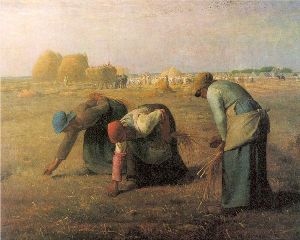
The Global Crisis, The Role and Meaning of Art in Society
by Caoimhghin Ó Croidheáin via gan - Global Research Sunday, Oct 17 2010, 6:27pm
international /
mass media /
other press
As the current world economic crisis deepens, the role and meaning of art in society changes as more and more people are dragged down by the weight of personal debt, unemployment and poverty. Galleries close and less people can afford to buy art creating a new awareness among artists of the fragility of the art market and the economic system behind it that creates an increasingly alienated and elitist exclusivism.
The beneficial effects of new radical-democratic global solidarity movements coming together to seek alternatives to this crisis in capitalist globalization may be to reinvigorate the long-standing, though weakened, connection between artists and the people (as opposed to the economic elites who have been the artists’ lifeblood in the past but who are now also in crisis).
While artists have depicted ordinary people since the Middle Ages, it was a past crisis that firmly established a mutually respectful relationship between the artist and the people. As Linda Nochlin writes in Realism:
“[I]t was not until the 1848 Revolution which raised the dignity of labour to official status and the grandeur of le people to an article of faith, that artists turned to a serious and consistent confrontation of the life of the poor and humble: to the depiction of work and its concrete setting as a major subject for art - as a possible subject even for an artistic masterpiece on a monumental scale.” (1)The origins of the 1848 revolutions in Europe were both practical and ideological. On the one hand technological change was adding to the woes of economic downturns and crop failures producing unemployment and starvation, while on the other hand, the new ideas of democracy, liberalism, nationalism, and socialism were fueling popular dissent. These new ideas questioned the ideology of the monarchical and aristocratic elites to its very core:
“Liberalism fundamentally meant consent of the governed and the restriction of church and state power, republican government, freedom of the press and the individual. Nationalism believed in uniting people bound by (some mix of) common languages, culture, religion, shared history, and of course immediate geography; […] Socialism in the 1840s was a term without a consensus definition, meaning different things to different people, but was typically used within a context of more power for workers in a system based on worker ownership of the means of production.” (2)Social Realism
“The Realists’ approach to these heroes of their time [e.g. ‘the worker’ or ‘the peasant’], was, however, completely consistent with their general attitude. If they raised the labourer and the lower classes to the serious and important level formerly reserved for the gods, kings and the mighty, at the same time, in their representations of the great men of their own time, they tended to play down the exceptional and to depict their heroes casually, in an everyday setting, often the in the milieu of, or actually engaged in, their work, as though the sitters themselves were unwilling to bother with the histrionic, posed gestures or conventional postures of grandeur.” (3)In Jean-François Millet’s The Gleaners, for example, the centuries old right of poor women and children to remove the bits of grain left in the fields following the harvest is depicted as repetitive, backbreaking labour. Their partially occluded faces depict the women more as objects than subjects, while at the same time, their extremely low position in the social order is highlighted by the fact that their only competition for the leftover grain are birds and other animals. In 1857, Millet “submitted the painting The Gleaners to the Salon to an unenthusiastic, even hostile, public”. (4)
“An artist who tried to represent the birth of socialism as an idyll, who tried to represent the socialist system, which is being born in hard-fought battles, as a paradise populated by ideal people – such an artist would not be a realist, would not be able to convince anyone by his works. The artist should show how socialism is built out of the bricks of the past, out of the material which the past has left us, out of the material which we ourselves create in the sweat of our brow, in the blood of our toil and struggle, in, the hard battles of classes and in the hard toil of man to remould himself.” [Karl Radek] (8)In the Socialist Realist artist Arkady Plastov’s Pay Day we now see people depicted as recognizable subjects, not objects. They are shown to be healthy, well-dressed and in control of their situation.
“Life, as asserted by socialist realism, is deeds, creativeness, the aim of which is the uninterrupted development of the priceless individual faculties of man, with a view to his victory over the forces of nature, for the sake of his health and longevity, for the supreme joy of living on an earth which, in conformity with the steady growth of his requirements, he wishes to mould throughout into a beautiful dwelling place for mankind, united into a single family.” (9)Revolutionary Romanticism
“[Romanticism] can be defined as a rebellion against modern capitalist society, in the name of past or pre-modern social and cultural values, as a protest against the modern desenchantment of the world, the individualist/competitive dissolution of human communities, and the triumph of mechanisation, mercantilisation, reification, quantification. Torn between its nostalgia for the past and its dreams for the future, it can take regressive forms, proposing a return to pre-capitalist ways of life, or revolutionary/utopian ones, when the feelings for the lost paradise are invested in the hope for a new society.” (10)The role of art in helping bring about change by connecting with progressive movements, ideas and politics and refusing to be stifled or misdirected will develop a new mutual respect between the artist and the public.
http://globalresearch.ca/index.php?context=va&aid=21483